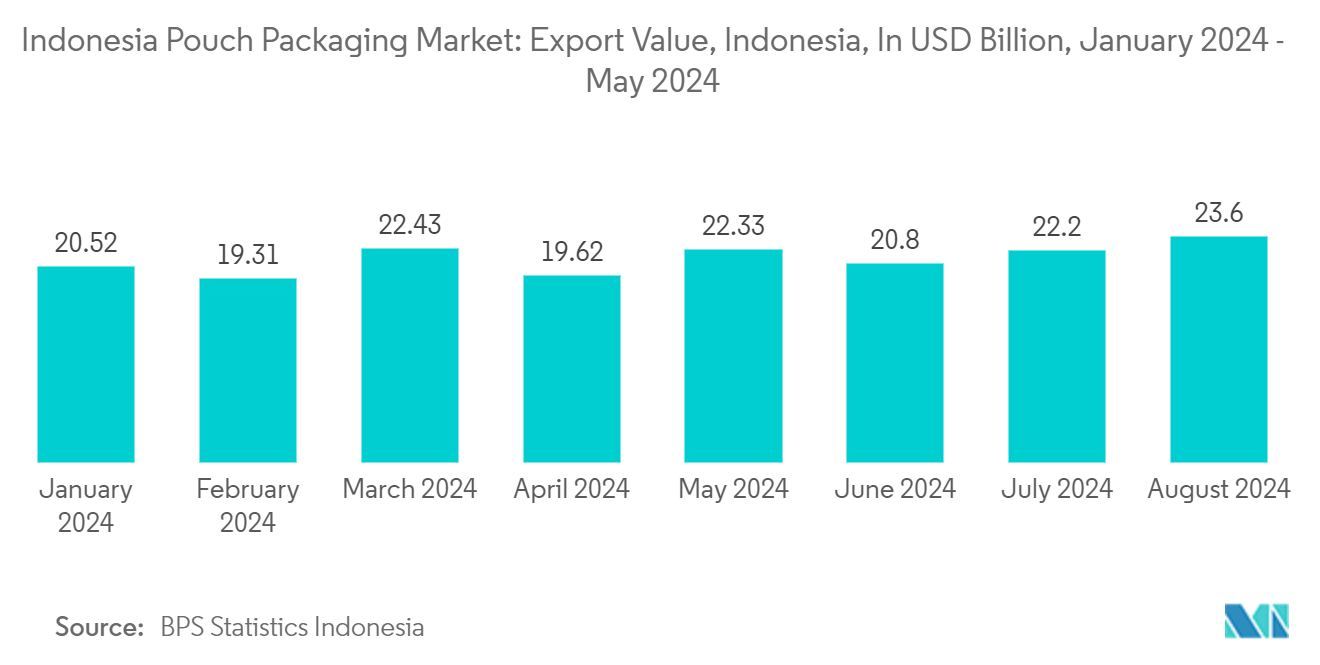Market Trends of Indonesia Pouch Packaging Industry
The Standard Pouch Segment is Expected to Register the Highest Growth
- Indonesia's pouch packaging market is on the rise, fueled by a growing appetite for packaged goods, a thriving e-commerce landscape, and swift urbanization. The nation's food industry is witnessing a surge, buoyed by rising global interest in Indonesian processed foods, further catalyzing market expansion.
- With rapidly evolving lifestyles and a growing number of buyers with higher disposable incomes, manufacturers are intensifying their efforts to enhance production capabilities, driving the pouch packaging market in the country.
- The growing pharmaceutical industry in Indonesia is driven by growing investments in the healthcare sector, which holds a prime spot on Indonesia's national agenda. Companies such as Amcor Group GmbH manufacture customizable medical pouch packaging that is cost-effective and made using barrier and breathable materials.
- Indonesia's economic growth receives a substantial boost from its exports. Data from BPS Statistics Indonesia showed that in May 2024, Indonesia's export value hit USD 22.33 billion, marking a robust 13.82% surge from the preceding month. Key export hubs for Indonesia in May 2024 included China, the United States, and India.

The Food Segment Expected to Dominate the Market
- Indonesia's food industry is expanding, driven by the increasing population, urbanization, and incomes. This surge in affluence, especially in urban hubs, is fueling food retail sales. A growing segment of middle and upper-income consumers is gravitating toward premium, higher-quality food products, amplifying growth opportunities for the country's food manufacturing sector.
- As more Indonesians enter the workforce and opt for convenience, the demand for processed and packaged foods like frozen desserts, processed fruits, and an assortment of chips and snacks is increasing. This shift in consumption patterns is boosting the demand for pouch packaging.
- Highlighting Indonesia's dependence on food imports, the Indonesian Food and Beverage Industry Association (GAPPMI) underscores that the nation sources 80% of its milk ingredients, 70% of soybean ingredients, and 100% of sugar and wheat from abroad. Moreover, Indonesia relies on imports for 80% of specific salts and beef and 70% of fruit concentrates, all pivotal for food and beverage manufacturing.
- The burgeoning food and beverage sector in Indonesia is driving the demand for pouch packaging. Data from the US Department of Agriculture (USDA) showed that Indonesia's food and beverage industry was valued at USD 88.7 billion in 2023, marking a 6.74% increase from the previous year.


